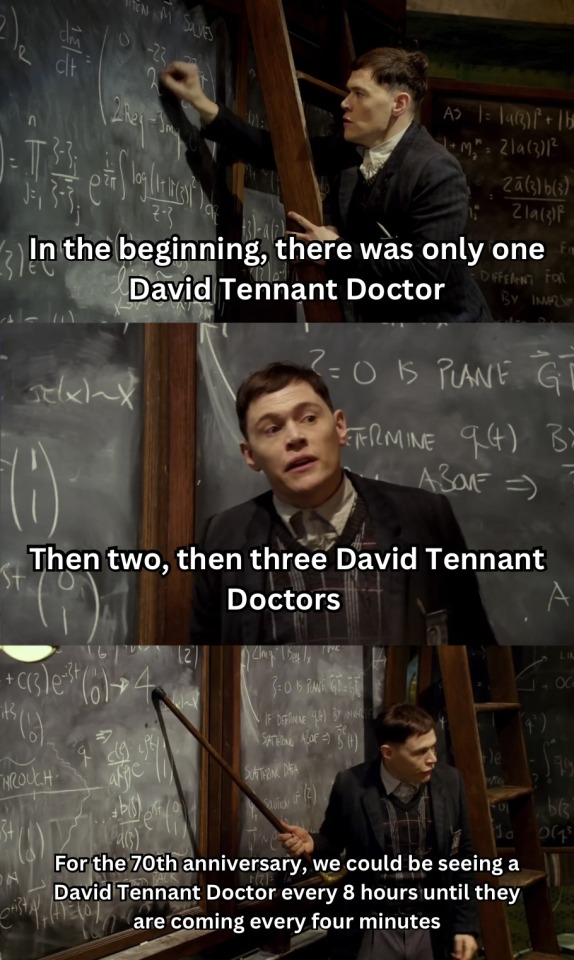[Fan theory blog that is mostly focused on John Dies At The End, Who Killed Markiplier story universe, and whatever other mystery that happens to catch my attention]So... bees. right?
Don't wanna be here? Send us removal request.
Text
42K notes
·
View notes
Text
i love when baby rats look exactly like their parents ......like yes


67K notes
·
View notes
Text
"clinical test for autism" fuckssake just explain to me in detail the up-to-4000-year-old-history of the paisley textile pattern and release me on an unsuspecting adult dinner party
3K notes
·
View notes
Text
So the Tully Monster (Tullimonstrum gregarium) is an incredibly enigmatic extinct animal whose fossils have only been found in one section of the Mazon Creek Fossil Beds near Morris, Illinois. Dating back to around 309 million years ago during the Pennsylvanian Epoch of the Carboniferous Period, the ironstone concretions found here are particularly rich with fossils.
The Tully Monster has stymied paleontologists for decades, because no one's been entirely sure how to classify it. It doesn't resemble anything else that's been found there or elsewhere, and it didn't have any features that easily distinguished it as a vertebrate or invertebrate.
So this most recent study consisted of scientists painstakingly analyzing over 100 Tully Monster fossils, along with several dozen fossils of other species found in the same area. They were looking in particular for any traits that would suggest these were vertebrates. In short? They didn't find any. Which suggests that the Tully Monster was most likely just a very, very weird invertebrate--not so surprising given the wide diversity of aquatic invertebrates found today!
One thing the study didn't look into was the possibility that this species may have been something even more unusual--a non-vertebrate chordate. These animals have a notochord, a flexible structure that provides attachment for muscles similarly to a vertebrate's spine. While modern vertebrates may have a notochord during embryonic development, most do not retain it beyond a vestigial state once development is complete.
There will no doubt continue to be debate about just what the Tully Monster actually was, but this study adds a significant piece to the puzzle.
2K notes
·
View notes
Text
30 notes
·
View notes
Text
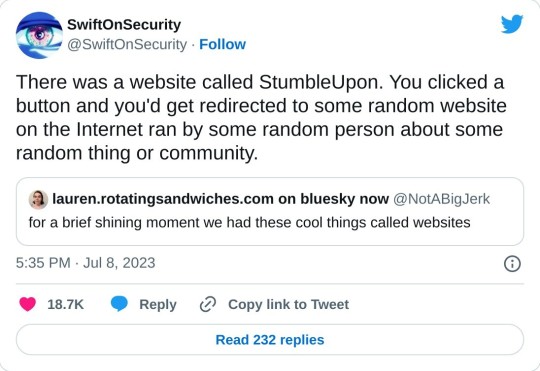
I can't stress enough how much I miss StumbleUpon
181K notes
·
View notes
Text

It's Trans History Week! Meet Dr. James Barry.
7K notes
·
View notes
Text
How much do weapons weigh?
Not as much as you might think.
Games often overestimate how much a sword or an axe weighs, and the assumption that many people make is that this lump of steel in your hand is a great burden, although this assumption has been working is way out.
The simple fact of the matter is, medieval weapons are quite light.

The medieval Arming Sword, the single most common sword of the middle ages. One handed, ext to carry, you wouldn’t expect this one to be that heavy, and it isn’t. Arming Swords tend to weigh between 3 and 4 pounds / 1⅓ and 1.8kg, that’s it! This particular example weighs 3 lbs. 11 oz / 1.6kg.

The Longsword, a much longer weapon than the Arming Sword, as the name implies, and obviously much heavier. But it’s not.
Standard Longswords, especially later period ones designed more for thrusting (like the one pictured above,) can be shockingly light. They can weigh in the same range as arming swords, although they can weigh more as well.
Longswords tend to sit between 3 and 5 pounds / 1⅓ and 2.25kg, and this example is 3 lbs. 7oz. / 1.5kg meaning it weighs less than the Arming Sword pictured before!

The Rapier, a famously light and nimble weapon that is also clouded in a fog of incorrect assumptions. The rapier is a long weapon. This example measures 45 inches in the blade and isn’t even among the longest I’ve seen.
Including all that weight from the steel basket around your hand, and it starts to add up. Rapiers can however be quite light, so including the extremes of the spectrum you end up with a range of between 2.5 pounds and 5 pounds / 1.1 and 2.25kg. This particular example is on the lighter side, weighing 2 lbs. 13 oz / 1.3kg.

The Zweihander, the famous greatsword, surely this is a much heavier weapons! Well of course it’s heavier than the others, the entire thing is five and a half feet tall, however they are deceptively light.
Zweihander weigh, on average, 6 pounds / 2.7kg. That’s it, only 6 pounds. Some on the heavier side weigh about 7lbs / 3.1kg, but they rarely exceed that. This example weighs 6 lbs. 2 oz. / 2.8kg.
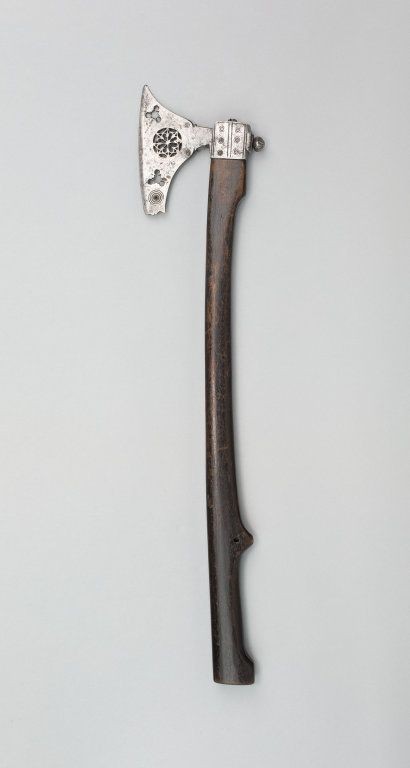
Moving away from swords, axes will surely be heavier, won’t they? Think again.
There is an important distinction between battle axes and wood cutting axes. Battle Axe heads tend to be thin, very thin, good for cutting flesh and bone, and easier to wield. Wood cutting heads are wider so as to be more robust, and split wood open more efficiently, and let’s not even talk about splitting mauls.
As such, one handed battle aces like this tend only to weigh between 1 and 4 pounds / 0.45 and 1.8kg. They can be very very light! The example is 1 lb. 7 oz. / 0.65kg.

Warhammer even tend to stick to that same range, between 1 and 4 pounds / 0.45 and 1.80. This example is 2 lbs. 8 oz / 1.15kg.
It’s only once you reach polearms that you begin getting heavier weights. The weights of a polearm is greatly changed by the length of it’s shaft, which can vary greatly, so these numbers will be somewhat more flexible.

Spears tend to be the lightest polearms, often weighing between 3 and 6 pounds / 1.⅓ and 2.7kg, with this example coming in at 4 lbs. even / 1.8kg.

Poleaxes, tending to be on the shorter end of polearms, also tend to be lighter. Interestingly, the examples I’ve seen are quite consistent, and all weigh between 6 and 7 pounds / 2.7 and 3.175kg, though greater variation is possible. This example weighs 6 lbs. 9 oz / 3kg.
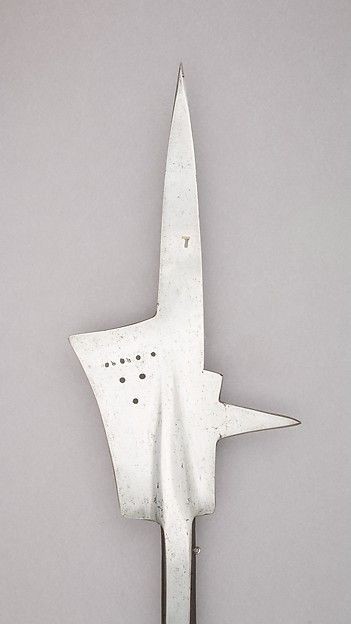
Halberds tend to be even heavier, though examples in museums tend to have hafts that are too short simply for storage and display purposes.
As such, the weights tend to be somewhat off, however we know from period sources and good modern reproductions that properly sized balberds tend to be about 8 pounds. This museum piece fits the “too light” mould, and weighs 5 lbs. 10 oz / 2.5kg.
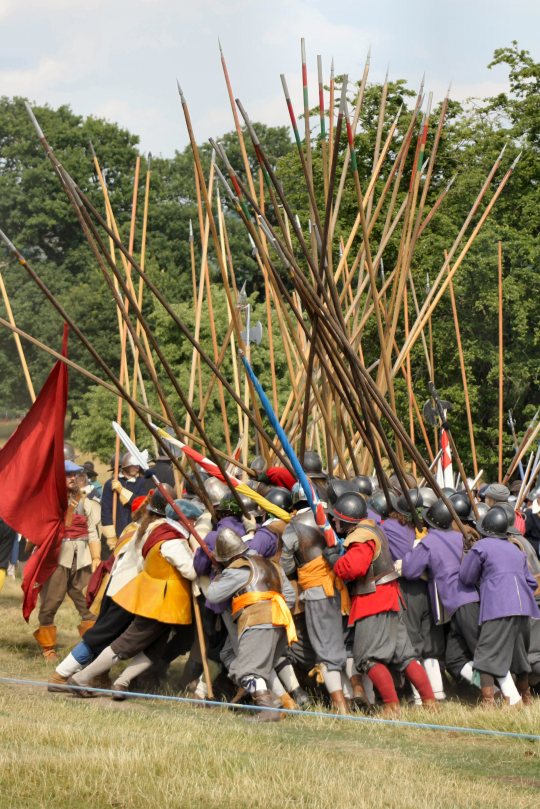
For the purposes of giving you (the reader) a proper appreciation of what the pike is, I elected to not use a museum photo for this one, so you can see their full scale.
The pike is a massive weapon, and these piles being used by reenactors in this photo are quite short. On the shorter end, they measured over 10 feet / 3m in length, and on the lookout get end occasionally hit 30 feet / 9.1m !
These could be the heaviest melee weapons typically used in medieval/renaissance warfare, and even these only weigh between 5 and 13 pounds / 2.25 and 5.9kg.
With your heaviest weapons only weighing 13 pounds at their most extreme, this paints a good picture of how light these hand weapons tended to be. Something for RPG and video game developers to keep in mind in the future.
- mod Armet
41K notes
·
View notes
Text
tbh if you're worried your art style doesn't accommodate different types of people here's a fun little checklist:
can you draw a fat butch woman, with very short/shaved hair?
can you draw a construction worker in their mid 40's?
can you draw an old woman who's been baking for 50 years?
can you draw an androgynous looking black queer artsy type?
can you draw a chubby 6 year old who's favorite animal is cars?
can you draw an asian trans woman who's a guitarist?
can you draw a wheelchair user who's a librarian?
can you draw an old black woman who likes to knit?
If your answer to any of these is a "no" or a "maybe" then maybe you need to flex your character design muscles in that area. I definitely haven't drawn characters who fit all of these categories myself, even if i know i could draw them. It's a fun challenge regardless, and every one of these prompts still has a bunch of variance within them.
5K notes
·
View notes
Text
(Yes, I went out and uprooted the Himalayan Balsam after filming this)
If you like this stuff, please consider becoming a patron!
12K notes
·
View notes
Text


Tigers appear orange to humans because our trichromatic vision perceives a wide range of colors, including the orange hues of their fur. However, many of the tiger’s prey, like deer and boars, are dichromats, meaning they see a limited range of colors and cannot distinguish orange from green effectively. To these animals, a tiger’s orange coat blends in with the green foliage, making it an effective camouflage. This evolutionary adaptation allows tigers to remain stealthy while hunting.
3K notes
·
View notes
Text
Poppy’s update back in October just kinda blew by everyone, but I personally find it very interesting, especially when you take into account that she’s clearly based on Big Bird. The climax of the video is her being tormented by some unknown presence while she sits in the dark, only for…someone (the transcript doesn’t identify them, but they sound suspiciously like Frank and Sally) to burst in and ask why she didn’t open the door. Poppy simply replies “I couldn’t get out…I…am I out?” For those of you not full of Seasame Street trivia, this is how you operate the Big Bird costume:

Looks a little claustrophobic, huh? Given how much Poppy resembles Big Bird, I have to imagine you work her puppet in a similar manner. What if the people talking to Poppy at the end of her video sound like Frank and Sally, not because they are, but because those are their puppeteers? No cast or crew information has been released yet, but it makes me wonder - is that the horror of Welcome Home? After all, one of the trigger warnings of the ARG is depersonalization. Did these people who created a beloved puppet show to entertain children begin losing themselves? They stopped being able to tell their puppets from their real lives? When the take ended and they could be themselves again…were they really out?
It opens up a lot of possibility about the other characters who’ve been spotlighted already. What could the horrors they peep be saying about the people controlling the puppets? Home showing Eddie the reality of his world, Sally knowing about the presence hunting them, Julie cracking under the pressure, even Wally and Frank’s ambiguous situations in all of this…it could all tie back to the humans who control these puppets. If I weren’t so tired I might go into more depth about it, but it’s an interesting idea.
280 notes
·
View notes
Text
Was drunk and bored and getting annoyed at the ridiculous coverage of the US election so I decided to fix the place.
I'm from Australia where we only have 7 states, as such I have the (objectively correct) opinion that 50 is too many states, so I decided to cut it down to 10.

A few notes on my improved US map:
•Despite Illinois making the cut, Chicago is now in Michigan, due to the state getting the entire bank of its namesake.
•Boston is also in Michigan due to special exception.
•New York is now the capital of Pensylvania
•Yes that's how you spell Pensylvania
•The border of California is just roughly the Rockies, no need to overthink it.
•Making Florida bigger actually dilutes it's power, but Texas must be abolished
•Colorado should still be a rectangle, that's my mistake, I just couldn't be bothered fixing it.
•Alaska has been returned to Canada with a hand written apology
•All the random ass islands that the US forgot to pretend they didn't colonise have gained independence
Please let me know if there are any more improvements you can think of.
Edit: As a number of you have mentioned, Alaska never belonged to Canada, and giving it to them would be incredibly wrong when the native people have been trying to gain independence all this time.
Luckily, the apology note got lost in the mail in all the turmoil, so Canada never realised they're meant to have Alaska now. The Alaskans just start quietly self-governing and hoping the US and Canada don't notice, then after a few years they declare independence.
10K notes
·
View notes
